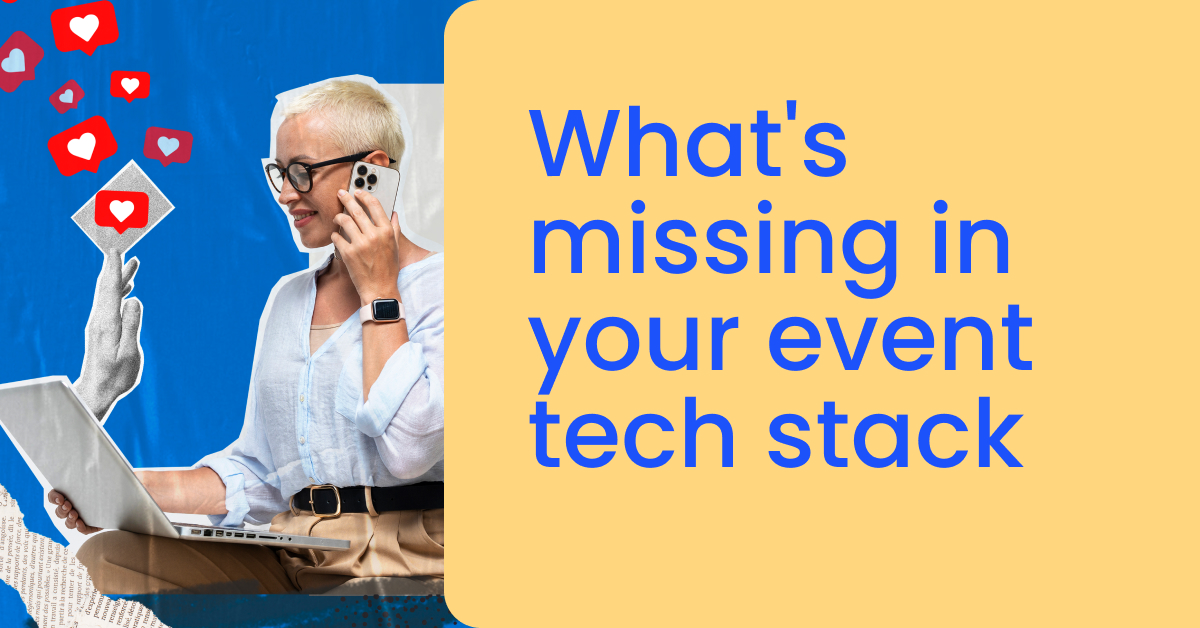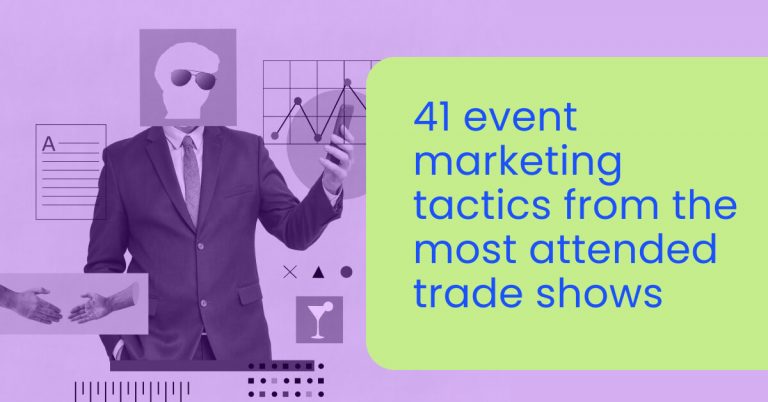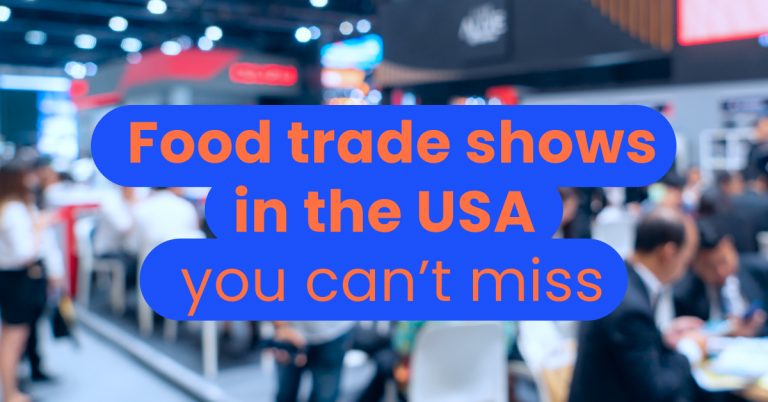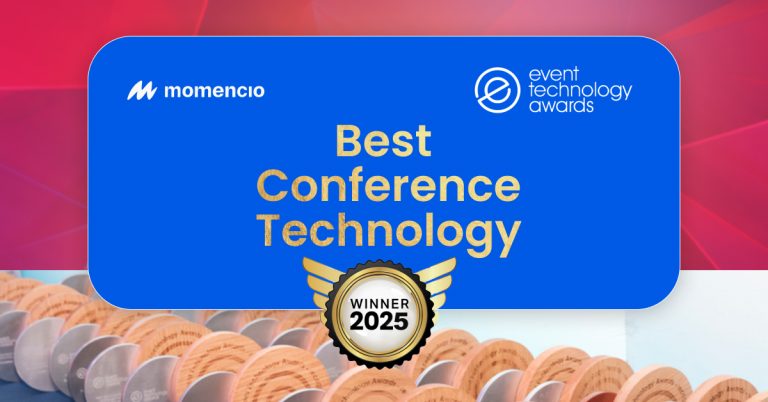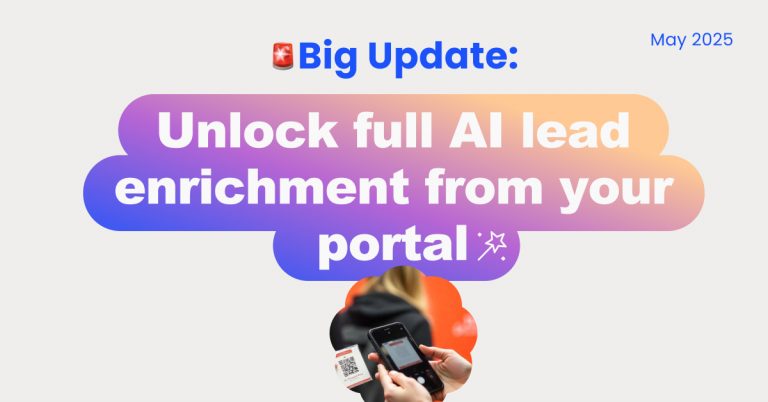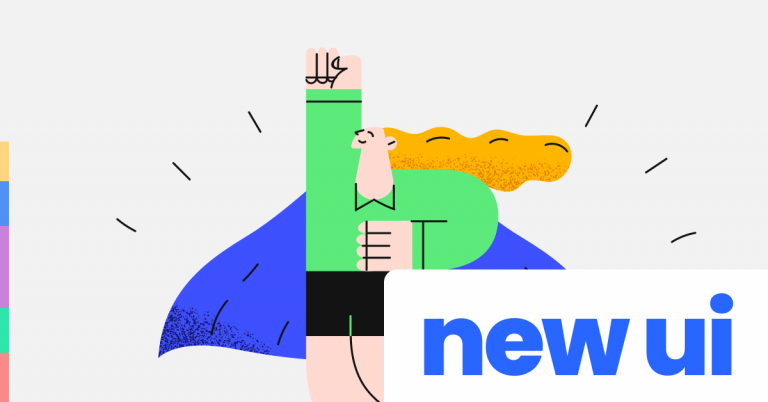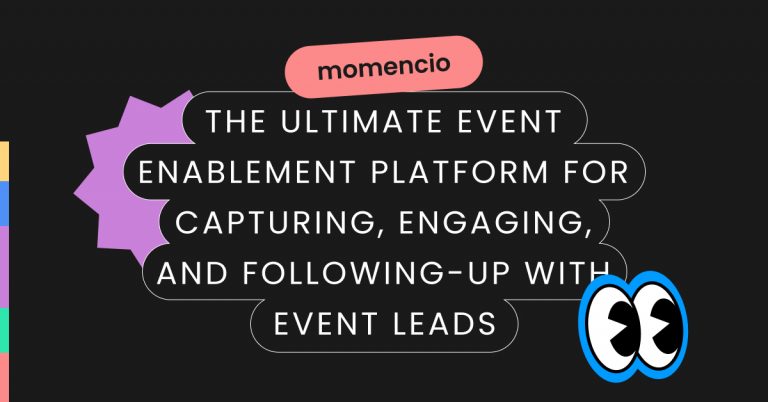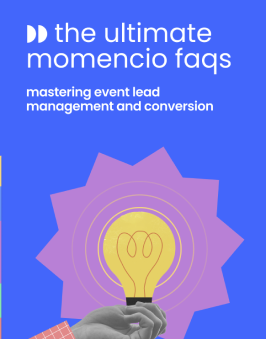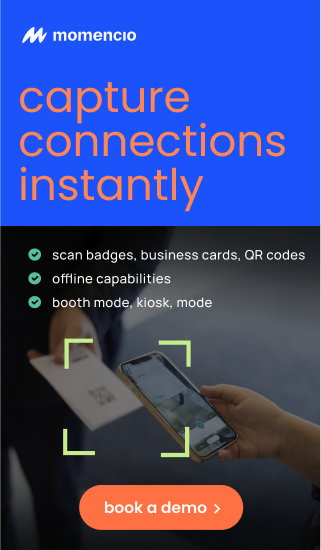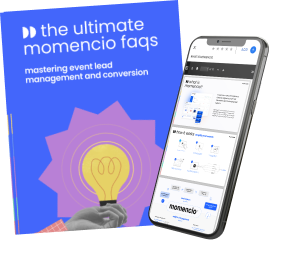Every detail was accounted for. The booth location was secured well in advance. Your team was briefed, rehearsed, and staffed for peak hours. Branded materials were crisp, screens were tested, and badge scanners were double-checked. On paper, it was flawless. By all traditional measures—attendance, engagement, even buzz—it was a success.
But a week later, the results tell a different story.
There’s little movement in the pipeline. The CRM shows leads, but sales hasn’t acted on most of them. Marketing is waiting on feedback. Follow-up emails have gone out, but few responses have come back. That post-event momentum you banked on has dissipated. Something’s clearly off—but it’s not immediately obvious what went wrong.
This is the gap that flawless planning can’t close.
Most teams invest heavily in pre-event logistics and on-the-ground execution, assuming that the value will naturally follow. But event ROI isn’t created at the booth. It’s created in what happens next—how well your event tech stack captures, interprets, and activates the intelligence gathered during those moments of engagement. That’s where most setups fail.
The issue isn’t the effort. It’s the infrastructure. Planning gets the event off the ground. But without a tech stack designed to carry that momentum forward, the business impact flatlines. What you’re missing isn’t process—it’s precision.
If your technology doesn’t surface real buying intent, accelerate lead handoff, or guide the next best action while interest is still warm, then all that effort starts to lose its value the moment the booth shuts down.
That’s the fallacy. Flawless execution is no longer the benchmark. Flawless follow-through is.
Perfect planning covers logistics. Not lead intelligence.
Planning an event is an operations masterclass. You’re managing budgets, aligning teams, coordinating with venues, finalizing designs, rehearsing demos, and ensuring every single component—from power cords to pitch decks—functions without friction. For most marketing and event teams, that’s where the focus lies. And to be fair, it’s where a lot of visible risk lives. A booth glitch or a staffing miss is easier to diagnose than a broken lead journey.
But logistics are not strategy. They don’t tell you who’s truly interested. They don’t reveal who’s influence-ready versus who’s just passing through. They don’t capture the nuance of human engagement that separates a genuine opportunity from a name on a list.
In most event setups, what gets tracked is who came by, what they scanned, and sometimes what content they picked up. What doesn’t get tracked—because the system isn’t designed to do it—is the why. Why did this person linger at a particular demo? Why did they ask the questions they did? Why did they return twice, but never leave a card?
This is the delta: traditional planning builds for coverage and control. It ensures presence. But event intelligence is about clarity. It’s not about how many came—it’s about who matters. It’s about capturing subtle signals of interest, timing, and readiness. And most stacks aren’t wired to do that in real time, or at all.
The real insight lies not in counting leads, but in interpreting behavior.
That’s why, no matter how perfectly your planning unfolds, you’re still missing the deeper truth of what actually happened at your booth—unless your tech stack is actively designed to look beneath the surface.
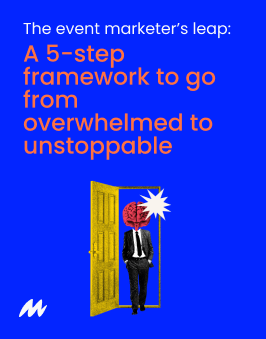
You’re missing context—because your stack stops at contact
Most event tech stacks are excellent at capturing who showed up. But they consistently fail to tell you why they mattered.
Collecting names and contact info is no longer the competitive differentiator it once was. In fact, it’s the bare minimum. What separates high-converting event strategies from average ones isn’t the volume of leads—it’s the depth of intelligence behind each lead. That depth is what your stack is likely missing.
Contact data is static. Buyer signals are dynamic.
The moment a badge is scanned, most systems consider the job done. But names, job titles, and emails are static attributes—they don’t tell you anything about buyer readiness, intent, or engagement.
Consider two identical leads: same title, same company, same event. One stayed at your booth for seven minutes, engaged with a demo, and asked two technical questions. The other walked by, grabbed a brochure, and left. Most event systems will treat them the same. Your CRM will log them the same. Your sales team will follow up the same.
But they are not the same.
This is the moment where most event data pipelines break—because they capture attendance, not behavior. Without behavioral signals, there’s no way to qualify, prioritize, or personalize. And without that, every follow-up becomes a gamble.
Context builds confidence—for your sales team and your buyers
The absence of context doesn’t just affect marketing. It creates a bottleneck for sales.
Reps are handed a list of scanned leads but no insights on who engaged, what they engaged with, or how warm the interaction was. The result? Hesitation. Generic outreach. A missed window of opportunity where relevance could have turned into a meeting.
Context empowers sales to act with precision. It tells them:
- What content was viewed (and for how long)
- Which product areas drew interest
- Who engaged multiple times
- Which reps spoke with which visitors
- What follow-up assets are likely to land
It replaces hunches with signals. It turns outbound into insight-led action. Without this, even the best booth interactions vanish into ambiguity the moment the event ends.
Modern stacks don’t stop at the scan—they decode the story behind it
If your stack only logs contacts, you’re left with the what. To influence pipeline, you need the why.
This is where intelligent event platforms step in—not just by storing data, but by interpreting behavior. They capture content triggers, dwell time, revisit patterns, rep notes, and resource downloads in real time. This creates a narrative around each lead—one that your sales team can immediately act on.
And that’s the shift: from passive contact collection to active buyer understanding.
In today’s environment, where attention spans are short and competition is fierce, context isn’t a nice-to-have. It’s your most valuable conversion asset.
The ‘post-event’ phase is a myth
It’s a phrase we hear often: “Let’s focus on post-event follow-up.” It’s built into every campaign timeline, every stakeholder deck, every wrap-up meeting. But here’s the hard truth—by the time the event ends, the window of opportunity has already started to close.
There is no post-event phase. Not if you’re serious about outcomes.
The conversion clock starts before the booth shuts down
Buyers don’t pause their intent just because an event ends. If someone expressed interest at 11:43 a.m. on Day Two of your trade show, your best chance to act is not three days later—it’s before they walk into their next meeting.
The idea that follow-up begins after the event is a dangerous assumption. It creates lag. It invites drop-off. And it pushes your brand interaction further away from the moment of peak interest.
Top-performing revenue teams now operate with a different cadence. For them, the event floor isn’t just a branding zone—it’s a live conversion environment. Their stack is built to identify and act on signals as they occur—not after.
Real-time visibility beats retroactive reporting
Traditional event workflows are reactive. Data is exported. Leads are reviewed. Notes are interpreted. And then—days later—marketing and sales try to piece together a coherent follow-up plan.
By that time, most buyer signals have gone cold.
Modern stacks are designed for real-time orchestration:
- A high-intent booth visitor can be instantly flagged to sales
- Content interactions trigger automated outreach sequences
- Reps are alerted to revisit hot leads while the event is still live
- SDRs back at HQ can book meetings mid-event, not post-event
This isn’t hypothetical—it’s already happening. The most advanced teams treat the booth as a live pipeline engine, not just a brand experience zone.
The event doesn’t end when the booth closes—it ends when pipeline moves
The success of your event is not defined by footfall or scan volume. It’s defined by momentum. Can your team act while the intent is alive? Can your system prioritize the right leads and suppress the noise? Can you shift from passive collection to guided conversion—in real time?
If your stack doesn’t support that shift, your follow-up is already behind before it even begins.
Post-event is not a phase. It’s a failure of timing.
The invisible layer: what your stack should quietly be doing
Great event execution isn’t limited by what’s visible. In fact, the most valuable systems at work during an event are the ones your team never sees—the automation, orchestration, and intelligence pipelines quietly running beneath the surface.
This “invisible layer” doesn’t just support the event. It enables everything that happens after it. Without it, events become disconnected from revenue. With it, they become engines of sustained commercial velocity.
Let’s unpack what a truly modern backend should be doing—without asking your team to do more.
Passive capture must evolve into real-time behavioral intelligence
Capturing lead data is not the hard part. Any scanner or form can do that. The real question is—what else is being captured alongside it?
An intelligent system must be capable of logging:
- Time spent at specific demo stations
- Sequences of interaction (e.g., downloaded content → asked rep a pricing question)
- Revisit behavior across event days or across company colleagues
- Micro-interactions (hovering near a topic display, partial content views, booth dwell time)
This goes far beyond badge scanning. It’s about creating an interaction fingerprint for every visitor—mapped in real time and enriched through automated rules, not manual tags.
The result: by the time a lead enters your CRM, they’re not just a name and email—they’re a behavioral profile, rich with engagement signals that sales can immediately act on.
Automated enrichment and segmentation must replace manual lead scoring
Most teams rely on post-event cleanup to classify leads—sorting by hand, updating fields, adding notes. This is operationally unsustainable and inherently flawed. It introduces delay, inconsistency, and opportunity cost.
A modern backend should:
- Auto-enrich contact records with firmographics, industry tags, and persona mapping
- Segment leads by product interest based on booth activity and content consumption
- Flag high-intent behavior using predefined scoring logic (e.g., repeat visit + demo view + rep interaction)
This intelligence doesn’t just inform follow-up—it determines who receives follow-up first, and how that follow-up is personalized.
Without this layer, your team treats every lead equally. And when everything’s a priority, nothing is.
Intelligent routing and sales triggers must be built into the flow
A strong event system doesn’t wait until the event ends to create motion. It routes leads dynamically, as signals emerge.
This means:
- SDRs can receive alerts while the event is live, not after the team returns
- High-priority leads can be assigned directly to AE calendars with suggested follow-up windows
- Warm leads can be surfaced to account owners while conversations are still fresh
These routing actions need to be frictionless. They should happen without your team needing to review spreadsheets or debate lead ownership post-event.
The system should also suppress irrelevant leads from sales to avoid wasting cycles—ensuring outbound focus stays on contacts with the highest likelihood to convert.
Follow-up orchestration must be built on behavioral triggers—not timelines
The moment someone walks away from your booth, their attention is already fragmenting. Waiting 72 hours to reach out is not just inefficient—it’s ineffective.
The invisible layer should:
- Automatically trigger personalized emails based on booth behavior (e.g., “Thanks for chatting about [topic]—here’s a deeper case study”)
- Send follow-up content that mirrors what was interacted with, not just a generic thank-you
- Remind reps of key points discussed via notes and summaries embedded into their CRM or outreach tools
This isn’t marketing automation. It’s journey continuation—contextual, relevant, and tied to actual behavior, not assumptions.
All of it must happen without the team noticing
Your booth team is there to connect—not configure systems.
Which means this entire layer of intelligence, enrichment, routing, and orchestration must work without intervention. No manual data entry. No syncing delays. No task overload post-event. If the system asks more of your team than it gives, it’s not an asset. It’s a liability.
Invisible infrastructure is what makes post-event execution seamless. And it’s what separates organizations that “attended the event” from those that converted it into business.
How momencio fills the delta
By now, the problem is clear. Flawless execution at the event doesn’t guarantee business impact after it. The real gap lies in how most tech stacks treat events as moments, rather than as data-rich systems of engagement and conversion.
That’s the delta momencio was built to close—not by adding another platform into the mix, but by embedding intelligence into the spaces where opportunity is usually lost: in the booth, in the handoff, and in the hours that follow.
Designed for motion, not just measurement
Most event platforms are designed to report on what happened. momencio is designed to move things forward while they’re still happening.
Instead of waiting for post-event reviews, momencio identifies high-value interactions in real time—whether that’s someone spending four minutes on a specific product demo, returning to the booth for a second conversation, or downloading a particular piece of content. These aren’t just logged; they’re interpreted, scored, and routed while the event is still live.
That’s the difference between “tracking” and translating intent into action.
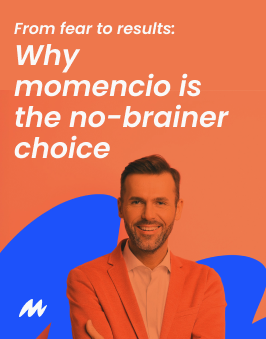
Contextual lead enrichment, without manual effort
momencio doesn’t ask your team to tag, sort, or remember who said what. It captures the interaction layer automatically—linking behavioral signals to individual leads, enriching profiles with firmographic data, and surfacing the most relevant talking points back to your sales team.
By the time your reps follow up, they’re not starting cold. They’re walking into a conversation already in motion—with context, interest indicators, and recommended next steps already built in.
Precision handoffs across your revenue team
Sales doesn’t want more leads. They want better leads, with clarity.
momencio routes each lead to the right person, with the right signal attached—automatically. Whether that’s a real-time alert to an SDR, a push to an AE’s CRM view, or a tailored outreach sequence that reflects specific content engagement, the platform ensures the handoff isn’t just fast—it’s meaningful.
It eliminates the classic post-event bottleneck of teams scrambling to figure out who owns what and what to say. By orchestrating this layer behind the scenes, momencio transforms raw lead lists into actionable, prioritized conversations.
Automation that feels natural—and invisible
Perhaps most critically, momencio doesn’t demand more from your team. It works quietly, layering intelligence into your process without changing how your people work.
There’s no disruption. No retraining. Just quiet infrastructure doing what it should: tracking what matters, surfacing what’s useful, and enabling your team to act while interest is high.
Where other tools complicate, momencio simplifies. Where others collect, momencio converts.
Stop overplanning. Start outfitting.
In today’s event landscape, execution is no longer the differentiator. Everyone has sharp booths, prepped teams, beautiful decks, and pixel-perfect demos. Planning well is no longer the edge—it’s the baseline.
What separates teams that drive real pipeline from those that don’t is what they’ve built underneath the surface—the infrastructure that captures buyer signals, routes intelligence, and initiates action without hesitation. It’s not about working harder. It’s about outfitting your operations with systems that move as fast as your prospects do.
Because the real ROI isn’t created at the booth. It’s created in the seconds that follow a great conversation. The minutes after a demo ends. The hours between interest and outreach. That’s where deals are made—or lost.
If your current stack can’t move at that speed, all the planning in the world won’t bridge the gap.
momencio was built for this exact purpose—to quietly, intelligently, and seamlessly convert moments of engagement into measurable sales momentum. Not by adding complexity, but by removing friction.
You’ve already mastered planning. Now it’s time to master what comes next.
Explore how momencio can bring precision to your post-event motion—quietly, and powerfully — Book a demo
FAQs
- How is momencio different from a traditional badge scanning app or lead capture tool?
- Unlike basic badge scanners that only collect contact information, momencio captures behavioral data in real time—what prospects interacted with, how long they stayed, which content they viewed, and what questions they asked. It enriches every lead with context, not just contact details, and routes that intelligence directly to your revenue team for immediate action.
- Can momencio integrate with our existing CRM and marketing automation systems?
- Yes. momencio is built to integrate seamlessly with major CRMs like Salesforce, HubSpot, Microsoft Dynamics, and others. It ensures leads captured at the event are synced with full behavioral context and properly segmented—without manual intervention or messy data mapping.
- How does momencio support real-time sales enablement during live events?
- momencio surfaces high-intent signals as they happen. Sales teams can receive alerts, lead scores, and contextual notes while the event is still in progress—allowing for mid-event follow-up, same-day meeting bookings, or prioritized outreach within hours of engagement. No delays. No manual triage.
- What happens after the event ends? How does momencio improve follow-up?
- Post-event, momencio continues the journey by triggering personalized follow-ups based on each visitor’s interaction history. It can automate content sends, notify sales of follow-up steps, and track downstream engagement—so every lead is nurtured with relevance and speed.
- Is momencio difficult to onboard or use for field teams at busy events?
- Not at all. The platform is designed for simplicity and speed on the ground. Booth staff don’t need to tag or log anything manually. The system captures interactions passively and intelligently in the background, so reps can focus on conversations—not screens or forms.
Interesting facts from research
- Only 21% of enterprises have fully integrated their event platforms into their broader tech stacks. This lack of integration hampers effective data flow and measurement.
- Companies that fully integrate their event technology into their marketing tech stacks report a 31% higher satisfaction with event performance. Integration enhances data utilization and personalization.
- 63% of marketers admit they fail to maximize the value of event content post-event. This indicates a significant gap in content utilization strategies.
- 28% of large organizations have deployed six or more event technology platforms, yet only 20% have fully integrated their primary platform into their sales and marketing tech stack. This fragmentation can lead to inefficiencies and data silos.
